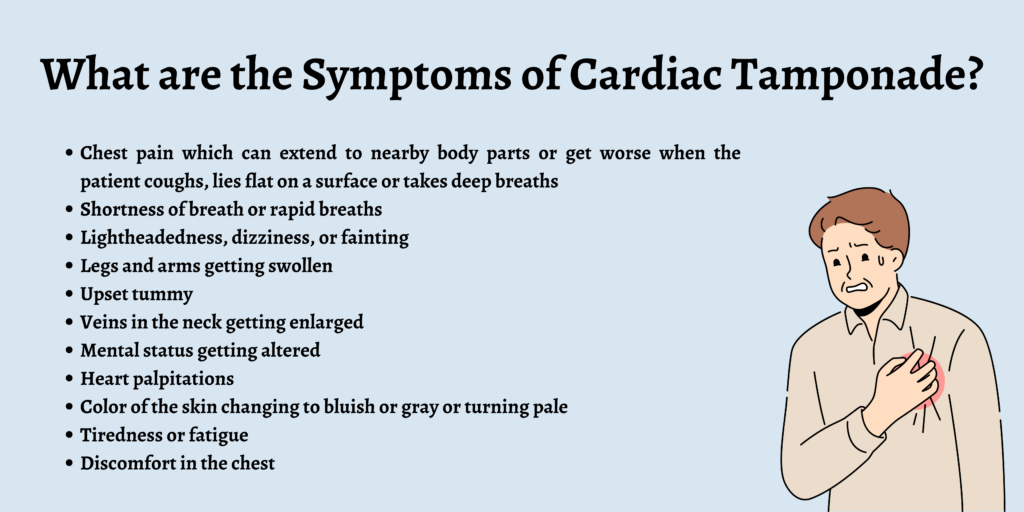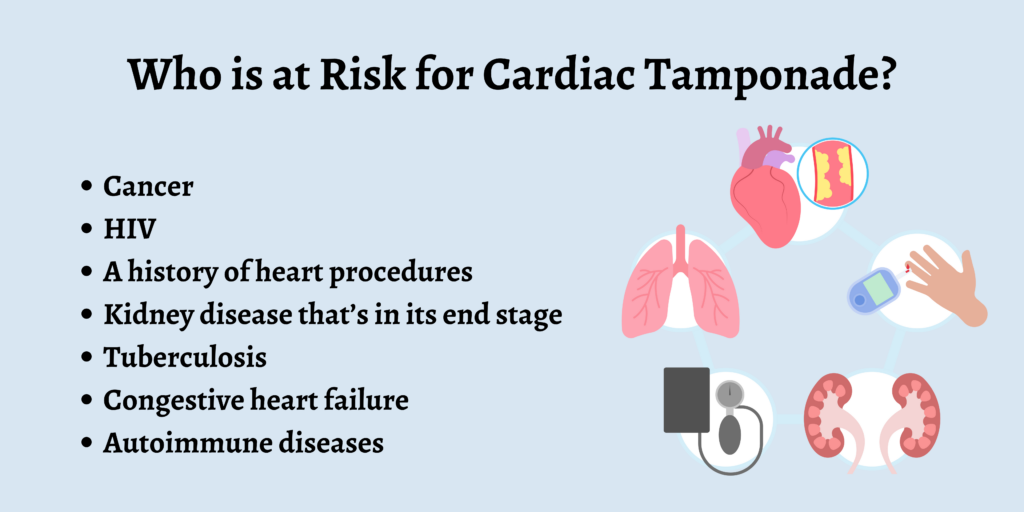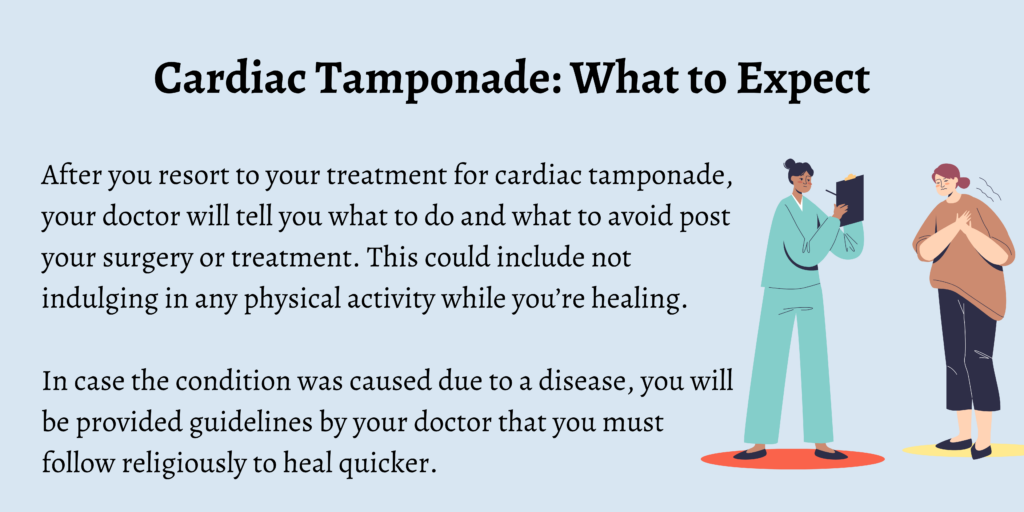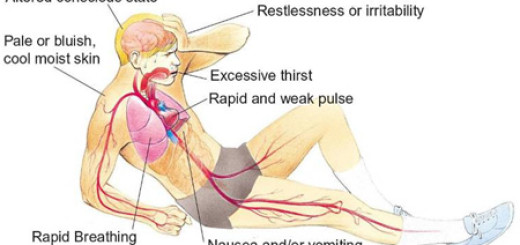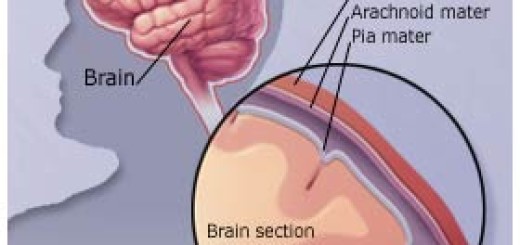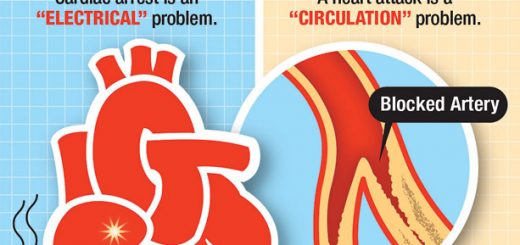What is Cardiac Tamponade?
Cardiac tamponade is a medical condition in which fluids or blood fill up the fluid sac around a person’s heart. Due to this, the heart’s chambers can’t fill properly, and when the heart doesn’t receive enough blood, it can’t pump a sufficient amount of blood either.
As a result of this, there is a drop in the patient’s blood pressure, thereby increasing their heart rate. Although cardiac tamponade is rare, it can happen to anyone and can also be life-threatening.
What Happens in Cardiac Tamponade?
The pericardium is a sac that surrounds a human’s heart within the chest and has two layers. The heart is held in place by pericardial fluid. Cardiac tamponade happens when a patient’s pericardium collects fluid.
With the fluid not having the required space to go elsewhere, the heart doesn’t get to expand and fill itself with blood.
How Common is Cardiac Tamponade?
Although cardiac tamponade isn’t very common, it can happen to anyone. Two out of every 10,000 people in the United States of America develop this condition as a result of other diseases.
What are the Symptoms of Cardiac Tamponade?
The symptoms of cardiac tamponade include:
- Chest pain which can extend to nearby body parts or get worse when the patient coughs, lies flat on a surface or takes deep breaths
- Shortness of breath or rapid breaths
- Lightheadedness, dizziness, or fainting
- Legs and arms getting swollen
- Upset tummy
- Veins in the neck getting enlarged
- Mental status getting altered
- Heart palpitations
- Color of the skin changing to bluish or gray or turning pale
- Tiredness or fatigue
- Discomfort in the chest
Causes of Cardiac Tamponade
The following could be the causes of cardiac tamponade:
- Cancer
- Blunt trauma (industrial or car accidents) or penetrating trauma (getting stabbed or having gunshot wounds).
- Infection or inflammation in the pericardium.
- Tuberculosis.
- Kidney or heart failure.
- Chronic immune diseases, such as scleroderma, rheumatoid arthritis, and lupus..
- Hypothyroidism.
- Heart attack.
- High radiation levels in the chest.
- Trauma resulting from heart procedures.
- Aortic dissection.
- Reaction to certain types of medications.
- Lung or breast cancer spreading to the pericardial sac.
Who is at Risk for Cardiac Tamponade?
A person’s pericardium can fill up with fluids if they have the following:
- Cancer
- HIV
- A history of heart procedures
- Kidney disease that’s in its end stage
- Tuberculosis
- Congestive heart failure
- Autoimmune diseases
How is Cardiac Tamponade Diagnosed?
Before conducting a diagnosis for cardiac tamponade, your doctor will ask about your medical history. They will begin with a physical exam, which could include:
- Checking the patient’s breathing and blood pressure
- Checking the patient’s pulse
- Listening to the sound of the patient’s heart and breathing
The tests that are usually conducted to diagnose cardiac tamponade are:
- Electrocardiogram (ECG)
- MRI scan or CT scan
- Echocardiogram
- Chest X-ray
The blood tests conducted for the diagnosis of cardiac tamponade help in the following ways:
- Detecting infections
- Identifying autoimmune diseases
- Spotting metabolic disorders
Treatment for Cardiac Tamponade
Cardiac tamponade can either be treated through surgery or through a procedure known as pericardiocentesis. The patient could be given antibiotics or pain medicines depending on the treatment they went through and what caused the condition.
Surgery is recommended when:
- The accumulated fluid can’t be reached by a needle.
- The condition was caused due to an injury.
- The patient’s pericardium needs to be removed.
- The patient has suffered damage to their body that is required to be treated.
Cardiac Tamponade: What to Expect
After you resort to your treatment for cardiac tamponade, your doctor will tell you what to do and what to avoid post your surgery or treatment. This could include not indulging in any physical activity while you’re healing.
In case the condition was caused due to a disease, you will be provided guidelines by your doctor that you must follow religiously to heal quicker.
When to Contact a Medical Professional
Once your cardiac tamponade treatment is complete, wait for about a week or two to get an echocardiogram done. At this time, also schedule an appointment to follow up with your cardiologist.
If in case you have surgery to treat cardiac tamponade, you should contact your healthcare provider if you experience chills or fever. A patient should also go to the ER if the area around the wound becomes red, painful, or swells up.
Conclusion
Since injuries and other diseases are mostly the cause behind cardiac tamponade, preventing or predicting it is impossible for the patient suffering from the given disease.
However, the condition can be handled and brought under control when detected early on, especially if the patient is aware of the symptoms and causes.
FAQs
1. What are the symptoms of cardiac tamponade?
The symptoms of cardiac tamponade include chest pain, upset tummy, shortness of breath, and dizziness.
2. What causes cardiac tamponade?
The causes of cardiac tamponade can be heart attack, kidney failure, and blunt trauma, among others.
3. Can cancer lead to cardiac tamponade?
Yes, cancer can often lead to cardiac tamponade.
4. What are the complications associated with cardiac tamponade?
Some of the complications associated with treating cardiac tamponade are infection, heart attack, bleeding, and irregular heartbeat.
5. What are the tests done to diagnose cardiac tamponade?
The tests involved in the diagnosis of cardiac tamponade could be chest X-rays, CT scans, echocardiograms, and EKGs.

